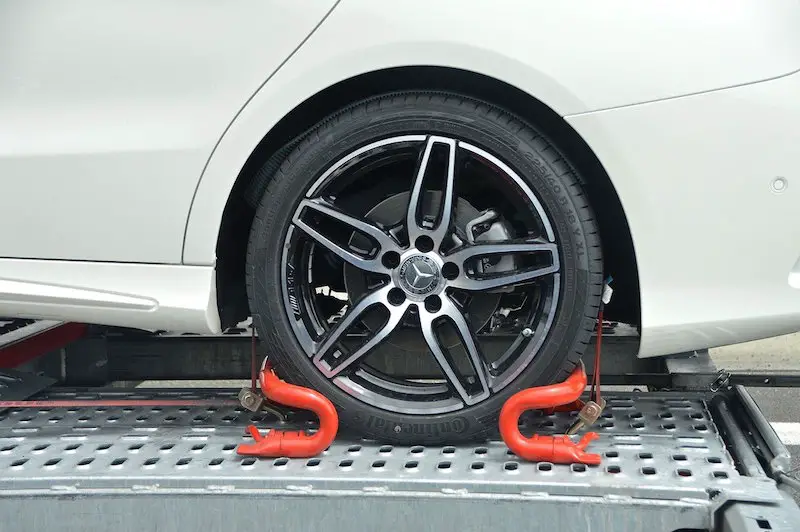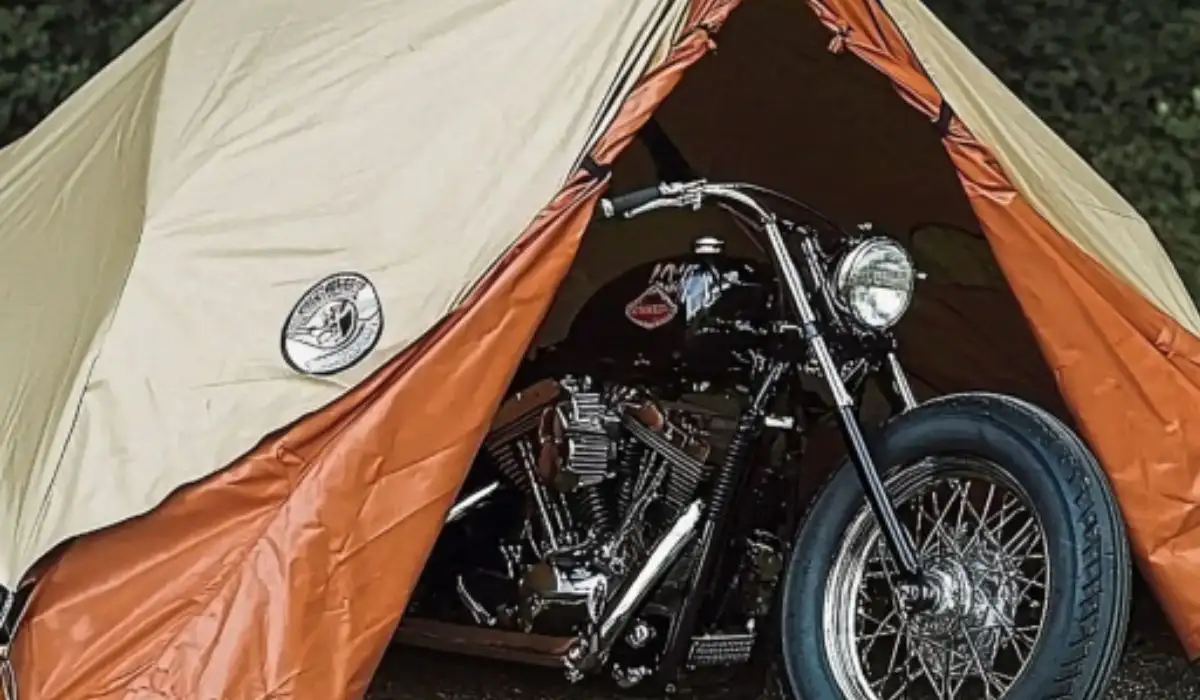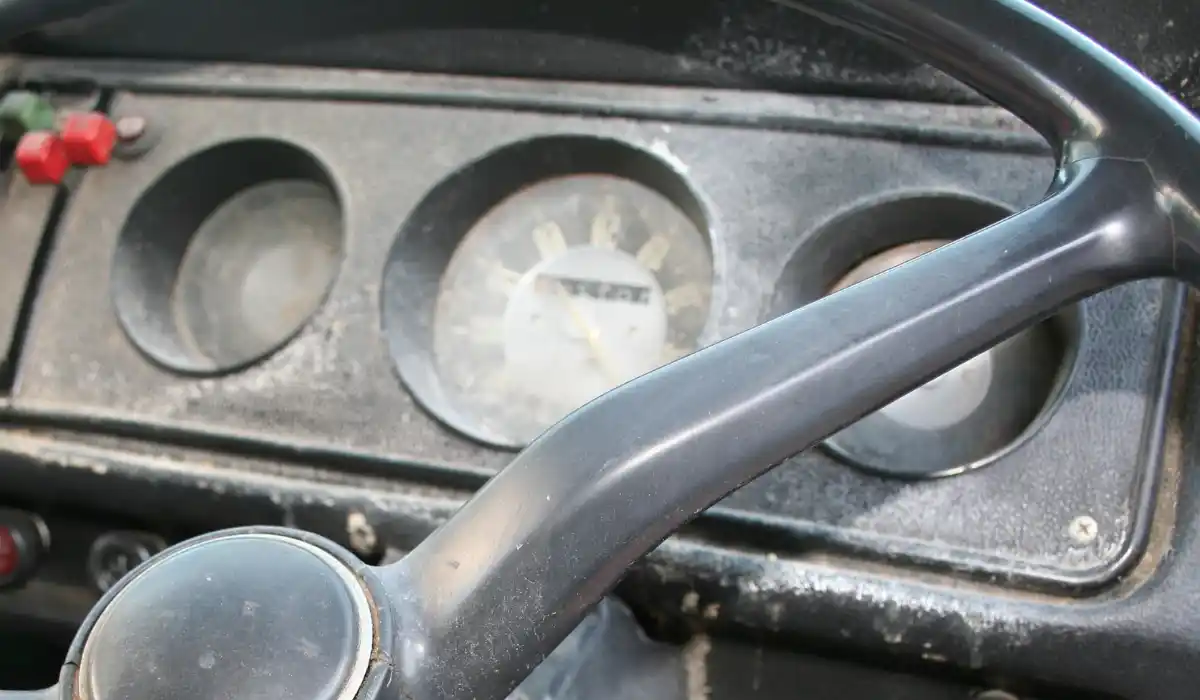
When you’re working on your car at home you want to use tools that are safe, convenient, and easy to use. One of these tools would be car ramps, which make it easier to access the engine and other components of your vehicle.
With the best car ramps you’ll have more clearance for maintenance like oil changes, belt changes, general inspections, and other maintenance work. They make it a lot easier to perform these tasks in the comfort of your own garage or driveway.
Compared to car jacks, ramps offer more stability and are easier to use, especially with heavier vehicles. In this post, we’ll look at our recommendations for the best car ramps you can use for doing your own maintenance at home.
Let’s jump right into it!
Jump Ahead To:
The Best Car Ramps
RhinoGear RhinoRamps Vehicle Ramp (Best Car Ramp Overall)

The RhinoGear RhinoRamps Vehicle Ramp is our top recommendation as the best car ramp for most people. These ramps are well-reviewed and a popular choice for thousands of people doing their own maintenance at home.
Made from a heavy duty polymer, these ramps are durable and sturdy for vehicles up to 12,000 pounds. This makes them a great choice for most standard cars, trucks, and SUVs.
The ramps feature a wide ramp section, perfect for wider tires and keeping your vehicle in place when you’re working on it. Thanks to the 17 degree incline, these can even be used with lower profile vehicles.
On the bottom is a non-skid base, which helps to keep the ramps in place when you’re loading and unloading the vehicle. The ramp itself has a tread pattern that prevents tire slippage, giving you peace of mind when you’re doing your vehicle maintenance.
It’s also worth mentioning that these are nestable. This makes them easy to store in your garage, even in a small space.
Overall, it’s the RhinoGear RhinoRamps Vehicle Ramp that we would recommend as the best vehicle ramps for most people. Despite some negative feedback, these are a great choice when used properly and make it easy to do your own car maintenance at home.
Nicky Nice Solid Steel Auto Ramp Set

For lightweight vehicles, such as cars and smaller SUVs, it’s the Nicky Nice Solid Steel Auto Ramp Set that we would recommend. The simple yet sturdy design makes these a great choice for doing your own maintenance on a car or smaller vehicle.
Thanks to the sturdy, steel design, these ramps have a total weight capacity of 6500 pounds. This is more than enough for most cars and SUVs, although trucks will want to use something with a higher capacity.
The heavy duty steel design is durable and reliable, especially compared to some of the plastic or polymer alternatives. It comes with a durable powder coat finish to prevent rusting or corrosion.
On the incline there are a number of excluded traction holes. These help to prevent your tires from slipping when you’re loading your vehicle.
Once mounted, the tires comfortably on flat spots elevated 13-inches in the air. This is more than enough room for performing basic maintenance on your car without having to use a jack.
Overall, despite their simple design, the Nicky Nice Solid Steel Auto Ramp Set are the best auto ramps for cars and smaller vehicles. The steel build is high quality and these are easy to use for doing your own maintenance.
Race Ramps RR-40 Service Sports Ramps (Best Car Ramps for Lowered Cars)

The Race Ramps RR-40 Service Sports Ramps is our recommendation as the best car ramp for low cars. Thanks to its 16.7-degree angle of approach, it’s perfect for sports cars, muscle cars, and other low profile vehicles.
With a weight capacity of 6,000 pounds for both ramps, this is plenty of loading capacity for most sports cars and smaller vehicles. The low angle of approach makes it easy to load your vehicle onto the ramp without worrying about scraping the bumper or running out of space.
These ramps can fit tires up to 8-inches wide. With a vehicle loaded there is a full 7-inches of lift, plenty of room for doing any necessary car maintenance underneath.
On the bottom of the ramp is a anti-slip design, which helps to keep them in place on any surface. The ramps themselves are made from a high density, durable expanded foam.
To make it easier to move them around, there is a handle on the ramps. This is a great feature if you’re using them regularly for doing your own maintenance at home.
There’s even a foam traction coating on the top of the ramp surface. Combined with the tire stop, you don’t need to worry about your vehicle slipping or rolling off when you’re working on it.
Overall, it’s the Race Ramps RR-40 Service Sports Ramps that we would recommend as the best car ramps for lowered vehicles. These are ideal for sports cars, muscle cars, and other low profile vehicles without a lot of clearance.
BUNKERWALL Large Heavy Duty Truck Ramps (Best Car Ramps for Trucks)

It’s the BUNKERWALL Large Heavy Duty Truck Ramp that we would recommend if you’re looking for a ramp to use with your truck. These are a great choice for working on your truck, SUV, pick up, or even a tractor thanks to their heavy duty design.
The pair of ramps boasts a load capacity of 10 tons. Such a high capacity means you can easily work on big trucks and other heavier vehicles without worrying about the ramp collapsing.
The ramp itself is made from a high density polyethylene material. This is a high-strength plastic that’s meant for heavy duty and professional use.
On the bottom of each ramp is a high traction, non-skid rubber grips. These help to keep the ramps in place when you’re loading and unloading your vehicle.
When it comes to keeping your vehicle and place, there is a high traction, non-skid tread pattern on the top of the ramps. This helps to reduce slippage and means you don’t need to worry about your vehicle sliding off once it’s loaded.
Each of the ramps weighs 20 pounds, so they aren’t lightweight by any means. However, if you want to be able to do your own maintenance on your truck or other larger vehicle, these are a great choice.
Overall, we would definitely recommend the BUNKERWALL Large Heavy Duty Truck Ramp. These make it easy to lift a heavier vehicle off the ground for better access and easier maintenance.
Black Widow PSR295 Plastic Car Service Ramps

The Black Widow PSR295 Plastic Car Service Ramps are lightweight and affordable. These are a great choice for performing routine maintenance on cars, SUVs, and smaller trucks.
With this set of ramps it’s possible to lift cars and trucks up to 6.25 inches off the ground. This provides convenient access to the engine bay and underneath the vehicle, for maintenance and oil changes.
Combined, the ramps have a maximum weight capacity of 16,000 pounds. Thanks to their durable, high impact plastic design, it’s possible to load most vehicles onto these ramps without exceeding the weight limit.
On the bottom of the ramps are slip-resistant feet. This rubber padding helps to prevent the ramps from slipping on concrete and other smooth surfaces when your vehicle is loaded.
The top of the ramps feature a grid design, which serves two purposes. It keeps your vehicle in place while letting water, dirt, and other liquids or debris to filter through.
Overall, if you’re search for cheap car ramps, it’s the Black Widow PSR295 Plastic Car Service Ramps that we’d recommend. Not only are these affordable, they’re durable and a practical solution for lifting your own car, truck, or SUV at home.
Best Car Ramps Buying Guide

Features to Consider When Buying a Ramp
When you have your own car ramps, it’s easier to drain the radiator or change the oil on your own. Doing most of your other basic car maintenance becomes easier as well.
The problem is that it’s not as easy as choosing the first set that matches your budget. There are a number of different features to consider before buying a car ramp.
This way you’ll be able to find the right one that matches all of your requirements, including your budget. To help you find the right choice, we put together these different features for you to consider.
Max Weight
When you’re shopping for the best car ramps to use with your car or truck, you need to know what your vehicle curb weight is. This is the weight of your vehicle without any cargo or passengers.
Instead of buying a car ramp that is around this weight, you would be better off finding one that can support a weight higher than the curb weight. Look for a ramp that can carry as much weight as possible and that’s within your budget.
This way you won’t ever have to worry about being overweight or the ramps not being able to support the total weight of your vehicle. For most cars and trucks, a weight limit of between 6,500 up to 10,000 pounds is suitable. These will probably set you back anywhere between $25 and $125 depending on the model.
Buy the Highest Quality Ramps You Can Find
It’s a good idea to buy ramps that are made in the United States or Canada. While there are some imported ramps, the ones made in North America are the safest, highest quality, and most reliable.
This makes sense because you’ll be spending time under the vehicle while it’s on the ramp. Obviously, you want something that can safely support your vehicle and you don’t want to be worried about it collapsing on you.
Products made in North America, especially the United States and Canada, go through a more thorough quality and inspection process. Those products imported from Europe go through a similar process, and can be a suitable alternative.
Height and Width
When you’re looking at different ramps, consider the height and width of the ramp itself. They need to be tall enough so that you can easily work underneath your vehicle. There should also be enough width to support the entirety of your tires.
Having extra height makes it easier to access the different components on your vehicle. The extra width means the car won’t fall off, which can happen on narrow ramps.
Look at the specifications listed in the product description. This is where you’ll be able to find the height and width of the specific ramps you’re interested in. Use a tape measure at home to see if they are high and wide enough for your needs.
Construction Materials
Car ramps are made from a variety of different materials. Choosing a specific material depends on the vehicle that you’ll be loading onto the ramp.
Most car ramps are made from plastic, polymer, resin, or composite materials. These tend to be lightweight and are easier to use in your garage or driveway. The problem with these materials is that they’re only suited for smaller vehicles, such as cars, SUVs, and smaller trucks.
Heavy duty car ramps are made from aluminum or metal. These are better suited for larger and heavier vehicles such as bigger trucks, SUVs, and campers. The main drawback to this type is that they’re heavier, harder to move, and will take up more space in your garage.
Grips
Look for ramps that come with some type of grip on the loading part. This feature prevents wheels from slipping and is especially useful in wet conditions.
Grips come in the form of grooves, grids, or elevated spots on the loading part. The tires will grip these sections and will be prevented from moving around.
To help keep the vehicle in place, tire stops are another practical feature. These are designed to keep the tires on the ramp and prevents any unnecessary sliding, which could lead to an accident.
Incline
The last thing to consider is the incline of the ramp. Depending on your vehicle, there needs to be enough clearance for the vehicle to be loaded.
Vehicles with a lower clearing, such as a sports car, will need a ramp with a lower angle of incline. Otherwise, standard cars and trucks will be okay with a standard clearance.
Why Use a Car Ramp?

Easier to Work on Your Car
Working from the ground or using a mechanic’s creeper, you only have limited access to the undercarriage of your vehicle. It’s also necessary for more bending over when you’re working on the engine bay.
High car ramps make it easier to access underneath the vehicle. They also lift the engine bay so you can more easily access all of the engine components without as much Bending.
More Ground Clearance
It can be difficult to access certain areas of your vehicle when you’re working on it. It’s even harder, and sometimes dangerous, to get underneath the vehicle without a lift or ramp.
Garage car ramps make it easier to get underneath with less difficulty. This provides you with more space to work on your vehicle and get everything done with more room to work with.
Safer Than Jack Stands
Car maintenance ramps are definitely safer than using jack stands, in most cases. If used incorrectly, a jack stand can fail and damage your vehicle or even seriously injure you.
With a ramp that’s that’s likely for the vehicle to fall down or for the platform to break. This is safer for you to work on your vehicle and a better alternative than using jack stands.
More Affordable Than a Mechanic
Those of you to doing your own maintenance will save a lot of money by working on your vehicle at home. It’s easier to pick up car ramps and try to fix something on your own without paying a mechanic.
For a set of ramps and some basic car maintenance tools, you can do most of the basic maintenance on your own. Not only are you learning a new skill, you’re keeping more money in your pocket while you’re at it.
Easy to Use
Finally, the best vehicle ramps are easy to use and install in your garage. There’s no fiddling around with a wheel jack.
When you’re ready to use it, it’s as easy as lining up your vehicle and driving on the ramp. Double-check that the vehicle is secure and you’re ready to go.
How to Use Car Ramps Properly

For many people, car ramps are easier and more practical to use than car jacks. The important thing is that you use them correctly and safely.
It might be tricky the first time, though with practice it will become easy to properly load your car. Here are some helpful tips on how to use car ramps properly and effectively:
- Start by parking your car on a smooth, sturdy, non-slip surface. The wheels should be facing forward towards the ramps.
- Position each ramp so that it’s centered perfectly with the tire. Double check that your vehicle is aligned with the ramps and the wheel is in the straight, neutral position.
- With the ramps positioned, get in your vehicle and begin to drive forwards onto the ramp. Before driving all the way up, check that the wheels are on the center as soon as they make contact. If not, reverse and try again until the wheels are centered.
- Once everything is centered, drive up onto the ramp until you come into contact with the wheel stops. If there aren’t wheel stops, measure the length and set a distance on the ground for when you should stop.
- With the vehicle at the top of the ramp, use the parking brake to keep the vehicle from moving. Get out of the vehicle and gently shake it to confirm that it is secure and stable. Use two wheel chocks for the back wheels to prevent it from rolling.
At this point, you’re ready to work on the underside of your vehicle or perform any necessary maintenance from the engine bay.




